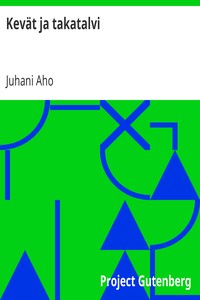| Summary |
"Kevät ja takatalvi" by Juhani Aho is a novel written during the early 20th century. The story captures the essence of springtime in the Finnish landscape as it intertwines with themes of nostalgia, nature, and the lives of two young men, Antero and Risto, on a journey through the countryside. Their experiences reflect a deeper exploration of personal identity and the cultural shifts occurring in Finland during that era. The opening of the novel introduces Antero as he awakens in a rustic barn after arriving late at night with his friend Risto, soaked from the rain. Initially disoriented, Antero gradually realizes he is in the countryside, filled with the sounds and scents of a vibrant morning. The landscape is described in vivid detail, emphasizing the contrast between the harshness of the past winter and the beauty of the new spring. As Antero observes the scenery, he recalls their journey from Helsinki, which had been filled with trepidation, and feels a sense of joyful relief as nature awakens around him. His interactions with Risto reveal their differing attitudes towards the beauty they have encountered, leading to a rich layer of introspection and dialogue about their plans for the future, including a quest to collect old Finnish folklore. The beginning sets a contemplative tone, hinting at the tension between tradition and modernity that will unfold throughout the story. (This is an automatically generated summary.)
|

